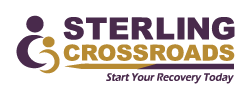Struggling with a substance use disorder can affect your health, relationships, and quality of life, but recovery is possible. Medication-assisted treatment (MAT) combines FDA-approved medications with counseling and behavioral therapies to address biology and mental health together. This evidence-based approach can reduce cravings, improve stability, and support long term recovery.
Sterling Crossroads offers a compassionate, outpatient approach to addiction treatment in Central Kentucky. If you are considering outpatient treatment, explore our MAT program in Mount Sterling and speak with our team about your goals.
Is medication-assisted treatment (MAT) right for you?
As you think about the best treatment options for you, consider these questions:
- Have you tried to stop using opioids, alcohol, or other drugs, and experienced difficult withdrawal symptoms or intense cravings?
- Have previous programs not led to the outcomes you hoped for, or have you struggled to stay engaged in treatment?
- Do you want care that addresses behavioral health and medical health together?
These questions are a starting point. The best way to decide is to meet with clinicians experienced in addiction medicine who can review your health history, current medications, and recovery goals.
How medication-assisted treatment works in addiction medicine
Opioid use and alcohol use change brain chemistry, driving cravings and a cycle of compulsive use. Medication-assisted treatment uses medications approved by the FDA to treat opioid use disorder (OUD) and alcohol use disorder (AUD) by stabilizing brain receptors, reducing withdrawal, and/or blocking euphoric effects. This allows patients to participate more fully in counseling, education, and recovery activities.
MAT is most effective when paired with psychosocial treatment, including individual counseling, group therapy, and behavioral therapies like contingency management, which uses tangible rewards to reinforce progress. Many experts compare AUD and OUD treatment to management of chronic conditions such as diabetes, where medication and lifestyle supports work together over time.
Common FDA-approved medications and their roles
Medication choice depends on your history, goals, and access. Two medications commonly used to treat opioid use disorder OUD are buprenorphine and naltrexone. No one drug fits everyone, so clinicians help select and adjust treatment.
Suboxone (buprenorphine + naloxone)
- Purpose: Suboxone combines buprenorphine and naloxone to treat opioid use disorder.
- How it works: Buprenorphine binds tightly to opioid receptors, reducing cravings and withdrawal symptoms while blocking the effects of other opioids, without creating a high. The naloxone component discourages misuse by creating sudden, intense withdrawal symptoms if Suboxone is misused.
Learn more about Suboxone treatment in Mount Sterling.
Vivitrol (extended-release naltrexone)
- Purpose: Vivitrol is a long acting form of naltrexone used for opioid use disorder and alcohol use disorder.
- How it works: Naltrexone blocks opioid receptors, which reduces the euphoric effects of opioids and helps decrease alcohol cravings. People must be fully detoxed from opioids before starting Vivitrol to avoid precipitated withdrawal.
Explore Vivitrol treatment for opioid or alcohol addiction in Mount Sterling.
Sublocade (buprenorphine)
- Purpose: Sublocade is a monthly buprenorphine injection for treating opioid addiction without the need for daily dosing.
- How it works: By providing continuous buprenorphine to block opioid receptors, Sublocade can reduce cravings and withdrawal and help patients focus on counseling and daily life.
Read about the Sublocade injection option.
Benefits and limitations of MAT
Benefits supported by research and national guidelines include:
- Fewer cravings and withdrawal symptoms
- Reduced illicit opioid use and lower risk of overdose
- Better retention in treatment and improved functioning at home and work
- Lower rates of infectious diseases linked to injection, such as HIV and hepatitis, when combined with harm reduction and medical care
- Improved outcomes when combined with counseling and behavioral therapies
Disadvantages can include:
- Possible side effects like constipation, sleep changes, or injection site reactions
- For naltrexone, the need for complete detox first to avoid withdrawal symptoms
- Insurance or access barriers, which your care team can help address
- Stigma or misunderstanding about MAT, even though it is evidence-based and considered effective treatment by national experts
Medication-assisted treatment MAT is not a standalone cure; it is one component of comprehensive substance abuse treatment that includes therapy, recovery supports, and medical care.
Does MAT treatment work?
Yes, MAT works for many people. The Substance Abuse and Mental Health Services Administration and the National Institute on Drug Abuse agree that MAT is associated with better survival rates and improved retention in treatment compared with no medication. Outcomes vary by person, and results cannot be guaranteed, but using FDA-approved medications with counseling is considered an effective treatment approach.
Who is a good candidate and what conditions does MAT treat?
Medication-assisted treatment can treat opioid use disorder, including heroin, prescription painkillers, and other opioids, and can also treat alcohol use disorder. People who may benefit include those who:
- Have ongoing alcohol or opioid use, cravings, or withdrawal
- Have tried to treat substance use disorders without medication and struggled to stay engaged
- Need a safer way to manage pain while addressing opioid dependence
- Prefer a maintenance treatment approach while building coping skills through psychosocial treatment
What to expect with Sterling Crossroads
Our clinicians provide MAT as part of a comprehensive outpatient plan. Integrating medications with counseling supports the development of coping skills, reduces risk, and helps many people rebuild their lives. If you would like to know more, our team is here to answer your questions about our MAT treatment in Mount Sterling.
FAQs: quick answers to common questions
What are the disadvantages of MAT?
Potential side effects, access hurdles, and stigma still associated with MAT.
Is MAT the same as rehab?
No. MAT is one part of care. Many people use MAT alongside counseling, peer support, and other therapies in outpatient or residential settings .
Can MAT help with heroin?
Yes. MAT medications are designed to treat dependence on both illicit and prescription opioids.
How long does MAT last?
Duration is individualized, and can range from months to years. Decisions are made with your care team and reviewed regularly.
Find expert MAT in Mount Sterling, KY
Medication-assisted treatment at Sterling Crossroads combines medical care, counseling, and recovery supports. Start your recovery journey today with compassionate, evidence-based care.

